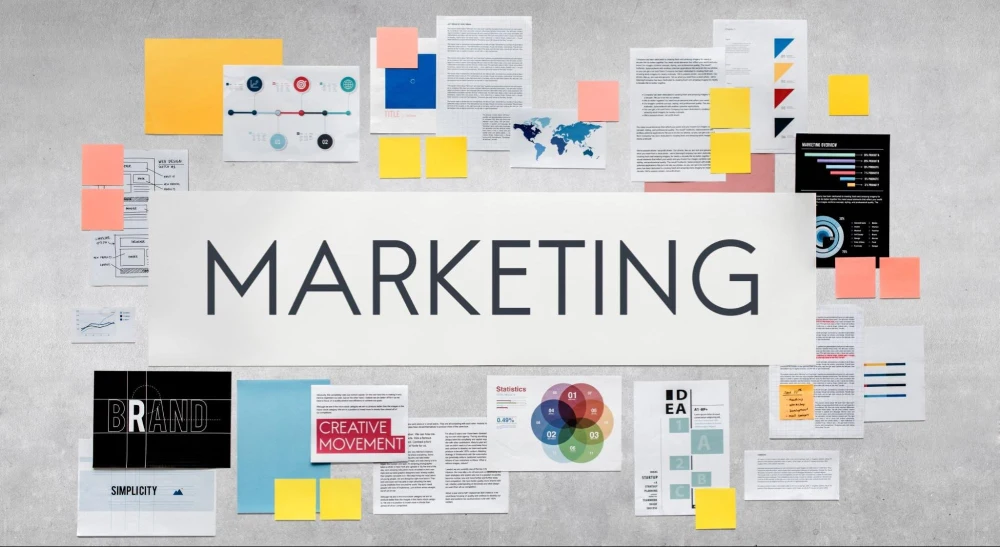WHAT IS MARKET RESEARCH?
“Market research is the process of evaluating the feasibility of a product or service, through research conducted directly with potential consumers in the market. This method allows companies or organizations to discover their target market, survey, collect and document opinions and make their informed decisions.”
FIVE STEPS OF MARKET RESEARCH
STEP #1:DEFINE THE PROBLEM
Having a well-defined subject of research might help the researchers when he/she asks questions. These questions should be directed to solve problems and must be adapted to the project’s purpose.
STEP #2:DEFINE THE SAMPLE
To carry out a market research, the researchers must need a representative sample that can be collected using one of the many sampling techniques.
STEP #3: CARRY OUT DATA COLLECTION
The fact that respondents do not answer a survey, or answer it incompletely might cause errors in market research. The correct collection of data will prevent this issue.
STEP #4: ANALYZE THE RESULTS
The data analysis should be captured in a market research report, which should also be written clearly so that effective company’s decisions could be made on this basis.
STEP #5: MAKE THE RESEARCH REPORT
One of the biggest mistakes that many researchers make is that they just present the reports in the same order of their questions and do not see the potential of storytelling.
STEP #6: MAKE DECISIONS
Do market research might help company to know a wide range of knowledge information
Eg: The intentions of consumer purchase, feedbacks on the growth of the target market.
STRUCTURE OF A SURVEY RESEARCH
1. INTRODUCTION
Let the respondents know who you are, why they have to give you information, show them the importance of your answers, and your commitment to confidentiality.
2. FILTERED QUESTIONS
Identify, classify, and group participants survey. For example: “Have you ever visited Saigon Technology company?”, if yes, continue with what questions? if not, what questions will be asked after that.
3. KEY QUESTIONS
Questions to extract the information you need should go from simple to complex, from closed to open questions.
4. SUBJECT QUESTIONS
Demographic questions to obtain more necessary data, avoid bringing these questions to the first of the survey to avoid respondent’s discomfort.
5. REGARD
Politely show appreciation for cooperative responses. Accompanying gifts (If any)
Image Source: Freepik – https://bom.so/s6f8Ea
THE DIFFERENCE BETWEEN QUANTITATIVE RESEARCH AND QUALITATIVE RESEARCH
|
QUANTITATIVE RESEARCH |
QUALITATIVE RESEARCH |
|
|
CHARACTERISTICS |
Concerning quantity and number |
Relating to substance and description |
|
SAMPLE SIZE |
Large sample size, representativeness and high accuracy |
Small sample size but diversity, low representativeness and accuracy |
|
PURPOSE |
Get reliable data for strategic decisions |
Deep insight, description, explanation & previous research results. |
|
FLEXIBILITY |
Fixed questionnaire, low flexibility. |
High flexibility, gain new ideas. |
|
APPLICABLE CASES
|
• Market Segment • Product evaluation, price, and advertising effectiveness. • Measure brand position • Market size research |
• Preparing for a new product concept • Discover little-known experiences, behaviors, phenomena, and trends come in the market. • The ability to approach the interviewer |
|
METHOD
|
Survey (paper, email, phone…), observation, experiment… |
Individual interview, group interview, observation, video recording, mailing,… |
|
ADVANTAGES
|
Highly representative, results are more metric and reliable in making decisions |
Flexible questions, deepening customer’s insights |
|
CONS |
Takes a lot of time & can not explain the phenomenon. |
The obtained results are subjective opinions, not highly representative. |
TYPICAL QUANTITATIVE RESEARCH QUESTIONS
|
1 |
YES/NO QUESTION |
|
PURPOSE |
Usually to classify and group survey subjects. |
|
ADVANTAGES |
Interviewers often like this type of Yes/No question because it doesn’t take much time to think, and usually can be answered immediately. |
|
CONS |
Only stops at the level of classification, has not deepened any further information. |
|
NOTE |
Because of the obvious yes/no nature of the answer, you should ask the question explicitly. Avoid asking “fill badger” and sentiments like “Do you spend a lot of time working in Saigon Technology Company?” (How much is a lot? hours per day, per week?) Instead, you could ask: “Are you going to the Saigon Technology company?” Yes/No. |
|
2 |
MULTIPLE CHOICE QUESTION |
|
PURPOSE |
Test the questioner’s predictions about the behaviors & trends of the respondents and find out the most prominent trends. |
|
ADVANTAGES |
Intuitive, easy to answer, and produces data that is easy to analyze |
|
CONS |
The answer is limited to the given list, which possibly causes bias and inaccuracies in your results. To solve this problem, you can add another option: “Other” at the bottom for the respondents to write their own answers. |
|
NOTE |
This type applies to questions with only one answer (single-answer) or multiple answers as checkboxes (multiple-answer). |
|
3 |
RATING SCALES QUESTION |
|
PURPOSE |
Use a scale (from 0-5, from 0-10…) to measure and evaluate a certain ability. |
|
ADVANTAGES |
Get more detailed results by level, compared to the two question types mentioned above. |
|
CONS |
The questions and answers are quite emotional and not clear enough, such as the level of preference, the level of importance, … so the accuracy and reliability are not high. Moreover, respondents will be confused between levels like 4, 5, and 6 because they don’t have too much difference. |
|
NOTE |
With this type of question, you must carefully explain what the numbers on the scale mean. For example: “Are you satisfied with the service at Saigon Technology company?” Score from 0 to 5, where 0 is not satisfied, and 5 is completely satisfied. |
|
4 |
RANKING QUESTION |
|
PURPOSE |
A ranking question asks respondents to sort the choices according to order of preference, to understand how they feel about each option. |
|
ADVANTAGES |
Easily compare options with each other and know which option is the “best” or the “worst”. |
|
CONS |
Respondents will take longer time to respond. It may be easy for them to choose between the “best” and the “worst”, but the “middle” options are difficult to compare with each other. |
|
NOTE |
Make sure the respondents have an understanding of all the options given to have a basis for comparison and order. For example, you ask, “What kind of software do you like the most in UI/UX Design? Sort by most favorite to least favorite. – Sketch, Adobe XD & Fima ” – Assuming a person does not know or have not used Sketch, it might be difficult for that one to arrange the correct list. |
|
5 |
OPEN-ENDED QUESTION |
|
PURPOSE |
Although the question is a bit of qualitative research, you can include it here to find new ideas, and gain insight into the emotions, behaviors, and thoughts of your target customers. |
|
ADVANTAGES |
Helps you uncover ideas you may have overlooked, giving respondents the freedom to voice their opinions instead of depending on given choices, and increasing accuracy and reliability. |
|
CONS |
Sometimes respondents are a bit “lazy” to write their answers because it takes longer than ticking. |
|
NOTE |
If you are just looking for data for quantitative analysis, then only closed questions can be used. But sometimes, a combination of closed and open questions makes it easier to deal with your quantitative data. Eg: o Closed question: “How satisfied are you with Saigon Technology Company? Score from 0-5 with 0 being unsatisfied and 5 being extremely satisfied.” o Open-ended question: “What do you think Saigon Technology Company needs to do to improve this level of satisfaction?” |
Image Source: Freepik – https://bom.so/tg9dwz
TYPICAL QUALITATIVE RESEARCH QUESTIONS
|
1 |
“DIG DEEPLY REASON” QUESTION |
|
PURPOSE |
If you have done quantitative research before to know the options their choices, then it’s time to explain the reasons. |
|
NOTE |
With questions that are too simple or the respondent’s superficial answers, do not meet your goals, do not ignore yet but dig deeper with the why, how, if not why questions. Use all possible WH-questions until you reach the “depth” you want. |
|
EXAMPLE |
• You go shopping at the supermarket 3 times a week, why do you have this habit? What is the deciding factor? • On days when you don’t go to the supermarket, Where will you buy food at? • Why don’t you go to the supermarket every day? |
|
2 |
“FAMILIAR BELIEVES” QUESTION |
|
PURPOSE |
Find out what factors help create unconscious trust in customers, or uncover a new insight that no one has thought of. |
|
NOTE |
Customers are often influenced by things that are repeated every day in advertising but may not really understand and think about them. Try to reverse this issue to see their reaction, see if they understand what the ad is trying to say, or if they think differently from common sense. |
|
EXAMPLE |
• Do you think that drinking milk tea is good for your health, why? • Good in what way? • Do you think drinking a lot of milk tea will cause side effects? |
|
3 |
FORECAST QUESTION |
|
PURPOSE |
Understand a customer’s future intentions, predict trends or the outcome of an event. |
|
NOTE |
Common questions are:
This means put to the respondents what they will do, are able to do but have not actually done. |
|
EXAMPLE |
• In the next few months, will you intend to find a new IT Software job? |
|
4 |
QUESTION FOR “SPECIAL AUDIENCE” |
|
PURPOSE |
Get “innovation” in the results, avoid getting “neutral” answers, diversify the respondents. |
|
NOTE |
Interview people who are particularly fond of or particularly disliked your product/brand/industry, ask about how they feel and the reasons for those feelings. |
|
EXAMPLE |
• Why do you never drink Starbucks? • Why did you change from Phuc Long to Phe La? |
|
5 |
PERSONAL EXPERIENCE QUESTION |
|
PURPOSE |
If you ask the interviewer in a general way, you will only get generic answers or make the respondent confused. Be specific about each issue. |
|
NOTE |
If you need to ask about a certain thing such as the experience of going to the supermarket, you should ask specifically what the customer likes or dislikes, is it convenient or inconvenient?,… |
|
EXAMPLE |
• How do you feel when you have to wait in line for payment? • For a long time, which row do you usually go to first, and why? (Instead of asking in general how you usually go to the supermarket.) |
|
6 |
SENSITIVE QUESTION |
|
PURPOSE |
You will understand what customers always want but are difficult to say, thereby meeting their insight. |
|
NOTE |
Although it is difficult to get respondents to share these issues, the results will be very worthwhile. You should ask in a tactful way, not “courageously” forcing people to speak when they don’t want to. You can not ask directly but can prefer their loved ones, or let them hear/see about a certain situation and encourage them to release their mind, or let them write their answers on paper, text messages,… |
|
EXAMPLE |
Questions about sensitive industries, feelings, personal relationships… |
MARKETING RESEARCH FREE TOOLS:
- Google Trends
- Think with Google
- Facebook Page Insights
- Living Facts
Resource: https://www.investopedia.com/terms/m/market-research.asp







![[Design Pattern] Lesson 04: Factory Design Pattern in Java [Design Pattern] Lesson 04: Factory Design Pattern in Java](https://saigontechnology.com/wp-content/uploads/Using Factory in Java.webp)
![[Design Pattern] Lesson 06: Prototype Design Pattern in Java [Design Pattern] Lesson 06: Prototype Design Pattern in Java](https://saigontechnology.com/wp-content/uploads/prototype-design-pattern-e1730281942851.webp)
